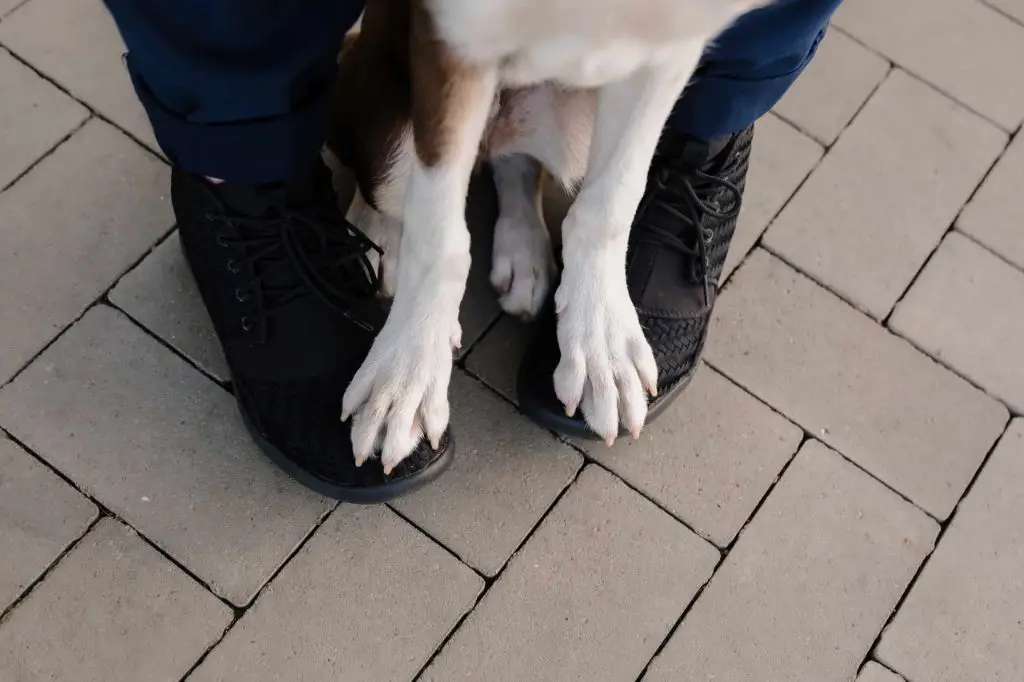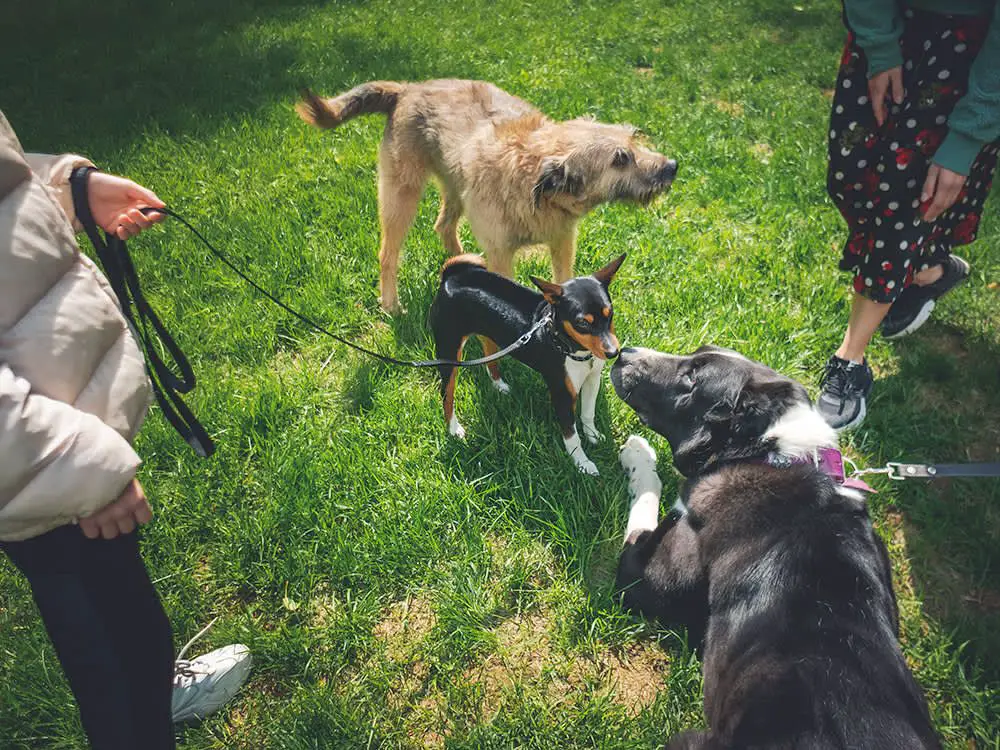Introduction
Dogs are naturally social animals who enjoy playing and interacting with other canines. However, some dogs prefer to keep to themselves when visiting dog parks and play areas. There are several potential reasons why a dog may be a loner at the park.
In this article, we will outline some of the main reasons a dog may avoid others and prefer his own company at the park. We will cover factors such as lack of socialization, fearful temperament, negative experiences, age, health issues, small dog size, and overstimulation. We’ll also discuss options to help a loner dog become more confident and happy to engage at the park.
Lack of Socialization
Lack of socialization, especially during the first few months of life, can make some dogs timid, anxious, or uneasy when interacting with other dogs later on. Puppies have a crucial developmental period before about 16 weeks old where they should be gently and positively exposed to new things, people, animals, places and experiences. Without this careful socialization, they may not learn proper doggy social skills or become comfortable in different environments.

Puppies that aren’t properly socialized tend to be more fearful, reactive and withdrawn as adult dogs. They simply haven’t learned how to communicate well with other dogs and interpret cues, body language and play signals. Under-socialized puppies grow into dogs that lack confidence and don’t know how to interact appropriately, which can create issues at the dog park. Proper, structured socialization sets up puppies for success by teaching them how to politely engage with others and feel at ease in a group setting.
Fearful Temperament
Some dogs are simply born with a more fearful, anxious, or reserved temperament due to genetics. This does not mean the dog was poorly bred, but rather its personality and tendencies were shaped by its genetic lineage. Certain breeds like Greyhounds are known for being more aloof and less social with unfamiliar dogs. Herding breeds like Border Collies also tend to be more reserved compared to gregarious sporting breeds like Labradors or Goldens. Even within a litter, there can be shy and bold puppies based on the particular mix of genes each dog inherits.
Dogs with a genetically fearful temperament are predisposed to being wary of new situations, people, dogs, or environments. They experience anxiety at a lower threshold than other dogs. What may seem like a mildly novel scenario to a confident dog can feel overwhelming and scary to a fearful dog. These dogs tend to prefer predictability and familiarity over exciting adventures. They are often shy or timid when meeting new dogs at the park and may try to avoid interaction.
It’s important not to punish or scold genetically fearful dogs for their anxious behavior. Yelling at them or forcing them into fearful situations will only make their anxiety worse. Be patient and allow them to warm up slowly, rewarding any brave or confident behaviors. You can also speak to your veterinarian about anxiety medication to take the edge off while working on positive association training.
Negative Experiences
Some dogs can become fearful and unsocial at the dog park if they’ve had bad experiences there in the past. Previous negative interactions like being attacked, bullied, or harassed by other dogs can traumatize a dog and make them wary of future interactions. If your dog was aggressively jumped on, bitten, or chased by another dog at the park before, they may have learned that the dog park is a scary place full of potential threats. As a result, they may choose to avoid interacting with unknown dogs to stay safe. Dogs that have been bullied or ganged up on by a group of dogs may become especially timid and defensive in group play situations. Past trauma can have lasting impacts on a dog’s behavior and outlook. If your dog seems hesitant or anxious despite normally being social, consider if they may have had bad encounters at the park that now make them keep their distance. With patience and positive reinforcement, some dogs can overcome their fear of dog parks. But others may feel more comfortable avoiding them altogether if they’ve had multiple upsetting experiences there. Pay attention to your dog’s signals to determine if previous negative interactions may explain their solitary behavior.
Age
As dogs get older, they often become less tolerant of puppies and younger dogs who want to play aggressively. An older dog may prefer to relax or interact with other mature dogs rather than chase after balls or play tug of war. Puppies and adolescent dogs have a lot of energy and may pester an older dog who wants to be left alone.

Older dogs are also more prone to arthritis and other joint issues that make running around uncomfortable. They may struggle to keep up with energetic young dogs at the park and feel intimidated. Additionally, their senses start to dull, making all the activity and noise stressful. For senior dogs, a calm interaction is much preferred over the chaos of an excited puppy pack.
If your older dog starts avoiding the dog park, it could simply be their way of seeking peace and quiet. Try taking them at less busy times or to a separate small dog area. See if they are more willing to socialize one-on-one with polite older dogs. And respect their needs by providing plenty of rest and gentle activity.
Health Issues
A dog that avoids other dogs or people may be experiencing physical discomfort or pain that makes social interaction unpleasant. Note how discomfort from injuries, arthritis, or other health problems may cause a dog to isolate themselves. Chronic pain can make a dog irritable, reactive, or defensive when approached. They may snap or growl to create distance from other dogs.
Joint issues like hip dysplasia are common in some breeds and can make movement difficult and painful. Ear infections, dental disease, gastrointestinal issues, or musculoskeletal injuries can also cause a dog discomfort. Additionally, cognitive issues in senior dogs like dementia may cause confusion or anxiety around unfamiliar dogs.
Have your veterinarian thoroughly examine your dog to rule out any medical conditions that could be contributing to anti-social behavior. Managing pain and treating any health issues could make your dog more comfortable mingling with others. However, the underlying cause is likely a temperament issue rather than just physical discomfort. Work with your vet and an experienced trainer to determine the best approach.
Small Dog Size
One reason a dog may be a loner at the park is due to their small size compared to other dogs. Small breed dogs like Chihuahuas, Yorkies, and Dachshunds tend to be more timid and wary around larger, energetic dogs playing vigorously. The size difference can be intimidating, and they may feel threatened or unsafe entering into play.

Large breed dogs often don’t realize their size and strength compared to petite dogs. Their rough, bouncy movements and loud barking may scare a small dog away. Small dogs are at risk of getting knocked over, stepped on, or even bitten if a larger dog gets too riled up.
To protect themselves, tiny dogs frequently choose to avoid the other dogs entirely by staying near their owner or keeping to the periphery. They may seem standoffish or unfriendly, but their aloofness likely stems from feeling undersized and vulnerable at the park.
Overstimulation at the Dog Park
For some dogs, the chaotic environment at dog parks can simply be too much to handle. With so many sights, sounds, and smells – not to mention all the other dogs and people – it can become overstimulating. This overstimulation can cause some dogs to shut down and withdraw in order to cope.
An overstimulated dog may exhibit signs like cowering, hiding, trembling, or wanting to leave the park. The excessive noise and activity levels exceed the dog’s comfort zone. Since dogs can’t verbalize when they’re feeling overstimulated, these behaviors are how they communicate that they’re feeling overwhelmed.
Some dogs are more prone to overstimulation than others. Shy, anxious, or fearful dogs have a lower threshold before the environment becomes too chaotic. Even friendly, socialized dogs can reach their limits at a rambunctious dog park. For dogs who tend to become overstimulated, the dog park simply provides too much excitement all at once.
Options to Help a Lonely Dog Socialize
If your dog seems anxious or withdrawn at the dog park, there are several tactics you can try to help them come out of their shell and learn to enjoy playing with other dogs:

- Start socialization early. Introduce your puppy to new people, dogs and environments beginning at 7-12 weeks old.
- Take it slow. Don’t overwhelm your dog. Introduce them to one new dog at a time and watch them closely for signs of fear or stress.
- Let them warm up on their own terms. Don’t force interaction. Allow them to approach and sniff the other dog when ready.
- Stay positive. Give praise and treats for calm, friendly behavior around other dogs.
- Find a compatible playmate. Pick a mellow, gentle dog for your timid dog’s first friendship.
- Keep your dog on leash initially. This gives you more control during introductions.
- Come at busy times. The energy and distraction can reduce focus on their anxiety.
- Try parallel walking. Walk side-by-side with someone with a friendly, stable dog.
- Observe play style. Match your dog with playmates that have similar energy levels and play manners.
- Stay close by. Your presence can give your timid dog security as they interact.
With time, patience and positive reinforcement, even the shyest dogs can gain confidence in the dog park environment.
When to Seek Help
If your dog shows extreme signs of fear or aggression in public situations like the dog park, you may need to seek professional help from a vet or dog trainer. Some signs that it may be time to get help include:
– Your dog cowers, trembles, or hides when approaching the dog park entrance or when interacting with unknown dogs. This could indicate intense anxiety.
– Your dog snarls, growls, or snaps when approaching other dogs. This signals true aggression that needs to be addressed.
– Your dog has gotten into any fights with other dogs that have caused injuries.
– Your dog compulsively runs away and avoids interacting with any other dogs at the park.
– Your dog’s reactions are getting worse with more exposure to the dog park rather than improving.
A professional dog trainer can assess your dog’s behavior and help implement a customized socialization and desensitization training plan. They can identify the triggers causing fear and provide controlled, positive exposure. A vet can prescribe anti-anxiety medication if needed while the dog undergoes behavioral training. Don’t delay in seeking help if your dog shows aggression or extreme fear – the sooner this is addressed, the more effectively it can be improved.